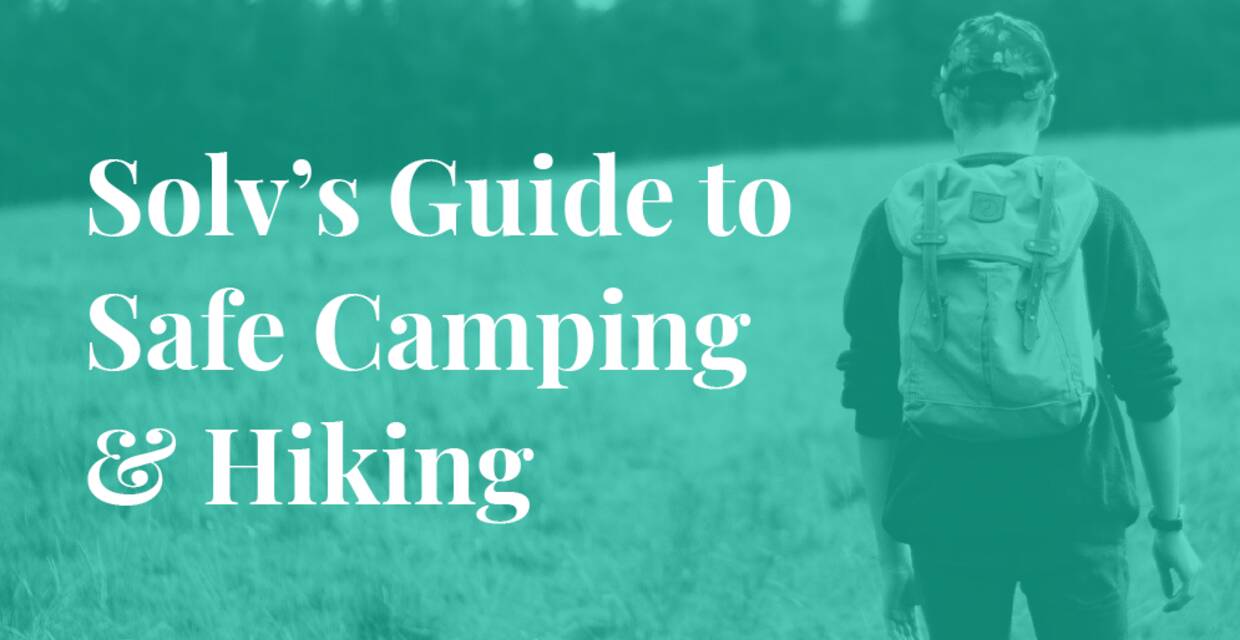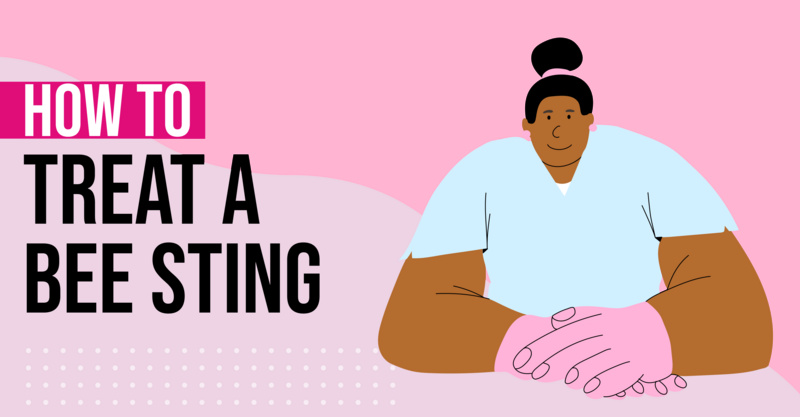Key Points
- The article emphasizes the importance of preparedness for safe and healthy summer outdoor activities such as hiking and camping. Being prepared can prevent injuries, save a trip to the emergency room, and potentially save lives.
- Common hiking injuries include fatigue, cramping, sunburn, blisters, twisted ankles, bug bites, and minor scrapes. To prevent these, it is advised to hike at an appropriate fitness level, stay on the trail, learn to read a map and use a compass, wear proper hiking gear, and protect skin from the sun.
- Other safety tips for hiking include staying hydrated, being aware of wildlife, knowing about poisonous plants, and informing someone about your whereabouts.
- For camping, maintaining a clean camp, setting up before dark, protecting oneself from carbon monoxide poisoning, and learning how to properly make, maintain, and extinguish campfires are important.
- The article concludes by suggesting using Solv to book same-day urgent care appointments in case of hiking or camping injuries or illnesses.
Now that the weather is warm across the United States, people are heading outdoors to enjoy summer activities such as hiking and camping. While these pastimes can provide an incredible amount of fun, excitement, and connection to nature, they also pose some pretty serious health risks. That’s not to say you shouldn’t hike or camp this summer. Instead, go into each activity prepared with knowledge about how to stay safe and healthy.
Being prepared ahead of time can save you a trip to the emergency room or urgent care—and potentially even save your life. Below, you’ll find Solv’s top tips for staying safe while camping and hiking this summer.
Related: 2021 Summer Vacation checklist →
How to Stay Safe While Hiking in 2018
Whether you’re tackling a shorter, local trail or you’re heading off to do all or a portion of a popular trek like the Appalachian Trail or Pacific Coast Trail, it’s important to understand the risks associated with hiking. One study conducted in 2004-2005 estimated that 13,448 hiking related injuries occur each year. While this number may only represent a small portion of the people who hike, no one wants to end up a statistic.
Below, find tips that are applicable whether you’re an expert-level hiker or are just starting out, as well as seven of the most common hiking injuries.
Common hiking injuries
When hiking, there are many things that can go wrong. Some of the most common physical hiking injuries include:
- Fatigue
- Cramping
- Sunburn
- Blisters
- Twisted ankle
- Bug bites
- Minor scrapes
To prevent these hiking injuries, follow the below tips for staying safe and healthy on the trail. These physical injuries can be treated at your local urgent care center.
1. Hike at a fitness level that’s appropriate for everyone you’re with
Hiking trails are usually marked with a difficulty level ranging from easy to extreme. Make sure that the hiking trail you choose is appropriate for everyone in your group, especially if you’re bringing children or dogs along. Nwhiker.com provides an excellent tool for evaluating the difficulty of a hike, taking into consideration factors such as elevation, length of hike, and technical skill required to safely hike the trail.
| Difficulty Level | Description |
|---|---|
| Easy |
|
| Moderate |
|
| Challenging |
|
| Difficult |
|
| Very Difficult |
|
| Extreme |
|
2. Stay on your trail at all times
One of the most important safety rules of hiking is to stay on your trail at all times. Veering off the trail to explore can put you at risk for getting lost. You also may encounter dangerous plants and animals that you wouldn’t find on the trail. Follow trail markers at all times.
3. Learn to read a map and use a compass
While you should always have a cell phone with you in case of emergency, be prepared to not have cell service on every hike. You should never rely on your phone’s GPS to guide you while on a hike. Instead, take some time to brush up on your map reading and compass skills before you head out on your first hike of 2018. Knowing how to tell where you are on a map can mean the difference between getting (and staying) lost, or finding your way back to the trailhead.
4. Wear proper hiking gear
Depending on the difficulty of your hike, you may be fine wearing sneakers or you may need to invest in a pair of hiking boots. Though a high-quality pair of hiking boots can be expensive, they can also help prevent blisters (as can good hiking socks) and twisted ankles. Thankfully, if you do find yourself with either of these injuries, you can have them treated at a local urgent care center.
You also want to make sure you bring a backpack on your hike. Again, the difficulty and length of the hike will dictate what you need to pack. Some items that are always a good idea to bring on a hike include:
- Nutrient-dense snacks like jerky, trail mix, or protein bars
- Water
- First aid kit
- Sunscreen
- Bug spray
- Hat
- Sunglasses
- Extra socks (in case the ones you’re wearing get wet)
5. Protect your skin from the sun
Before you begin your hike, it’s smart to put sunscreen on any exposed parts of your skin, including your face, ears, and neck. Even if it’s a cloudy day, you can still get a sunburn. Splurge on a high-quality sunscreen with an SPF of 50 to 100. It used to be thought that sunscreens with an SPF over 50 weren’t effective but a new study in the Journal of the American Academy of Dermatology found that SPF 100+ is actually most effective at preventing burns. Be sure to re-apply throughout the day, as sunscreen does wear off as you sweat. Not wearing sunscreen can put you at risk for sunburn which can cause skin cancer.
6. Keep mosquitos and ticks at bay
The Centers for Disease Control (CDC) encourages hikers to be careful about getting mosquito bites or collecting ticks, as they can cause certain diseases. Insect repellent that contains DEET is the best way to prevent bug bites and protect yourself from disease. After ever hike or camping trip, you should check for ticks all over your body—including your scalp. Wearing long sleeves and pants can help prevent bug bites but shouldn’t be worn in extreme heat.
7. Stay hydrated while hiking
Staying hydrated while hiking can make a world of difference in keeping you healthy. A good rule of thumb is to drink approximately 1 liter of water every 2 hours that you’re hiking. You can carry water bottles or a hydration pack. If you’re hiking or camping in the backcountry, you will probably need to filter your water before drinking it.
8. Be aware of wildlife and take necessary safety precautions
Before you head out on a hike, check online to find information about potential wildlife encounters in that area. Most trails will have plenty of information on this. It’s important to know before you go. Remember, when you’re hiking, it’s your responsibility to practice wildlife safety. Here are a few tips on wildlife safety:
- Never, ever approach a wild animal, even if it doesn’t appear to be dangerous
- If you see bear cubs, or any other baby animal, move away from it immediately. It’s never safe to get in between a mama animal and her baby.
- Never feed wild animals. Not only does this put you at risk, it also creates a habit for the animal to associate humans with free food, which can put other humans and the animal at risk.
- Wear bells or carry a bear whistle and/or spray if you’re hiking in bear country. If you see a bear from far away, give it plenty of space. If you come face to face with a bear, follow these bear safety instructions.
9. Get to know poisonous plants
In the wild, there are many different types of plants—some are safe to touch, while others are incredibly poisonous. Before you go hiking, it’s a good idea to learn more about the types of plants you may find. However, it’s probably best not to eat any berries you find in the wild. If you do touch or ingest a potentially poisonous plant, get off the trail right away and call poison control at 1-800-222-1222 or head to the nearest urgent care center. If you stop breathing or are experiencing severe symptoms, call 9-1-1.
10. Make sure someone knows where you are at all times
Lastly, when you go on a hike, let someone you trust know where you’re going, who you’re with, and when you expect to be back. Arrange to check in with them at a certain time. If you don’t check in, they’ll know that something might be wrong. Have them attempt to call or text you or someone in your group. If they can’t get in touch with you, let them know that they should call local authorities.
How to Stay Safe While Camping in 2018
Camping can be a great way to spend time outdoors, bond with friends and family, and enjoy your summer vacation. Keeping safe while camping is most important. In addition to following all of the above tips for hiking (they also apply to camping), here are some key things to remember before and during your 2018 summer camping trips.
1. Keep a clean camp
Regardless of whether you’re camping in the front country (like at a campsite) or in the backcountry (where you have to clear your own site), it’s important to keep a clean camp. This can prevent bears, bugs, rodents, and other wildlife from trying to forage your campsite for food. Here are some tips for keeping a clean camp this summer:
- Hang your food in a tree at least 200 feet from your sleeping space
- Use a rodent and bear-proof food sack to store your food (you can also get a bear-proof container)
- Never cook or eat in your tent (the smell of food in your tent invites hungry wildlife)
- Don’t wear clothes you cooked in to bed
- Hang all trash away from your campsite
2. Make camp before dark
Always be sure to set up your campsite before nightfall. Doing it during the night can be challenging, even if you have headlamps and lanterns available. Not being able to see clearly can cause injury or accidents to occur.
3. Protect yourself from carbon monoxide poisoning
Fuel-burning equipment like gas stoves, heaters, lanterns, and grills should never be used inside a tent, camper, or other enclosed shelter. They should only be used away from flammable materials, and never left unattended.
4. Learn how to properly make, maintain, and extinguish campfires
Ah, the campfire. It’s the quintessential necessity for a cozy camp. It’s important that you understand how to safely make a fire—and put it out. Not putting fire safety as a priority can cause burns or a forest fire, both disasters that should be avoided at all costs. Here are some tips to help keep your campfire safe and fun:
- Never build a fire under low trees
- Never leave a fire unattended, even for a few minutes
- If there’s no fire pit, surround the fire with rocks to keep it contained
- Clear debris from 10 feet around the fire—the fire should be started on bare soil
- Learn how to build a fire
- To extinguish your fire, pour lots of water on it—make sure every burning ember is put out and any remaining wood or coal is completely cool before leaving the fire
Book a same-day appointment at urgent care
Hiking and camping injuries and illnesses happen. When they do, you need care fast. At Solv, we believe that you should be able to get last-minute, quality care without the wait. When you use Solv to book a same-day urgent care appointment, you’ll be seen even faster. Save money, save time, feel better. Happy camping!
Frequently asked questions
What are some common injuries that can occur while hiking?
Some of the most common physical hiking injuries include fatigue, cramping, sunburn, blisters, twisted ankles, bug bites, and minor scrapes.How can I choose a hiking trail that's appropriate for my fitness level?
Hiking trails are usually marked with a difficulty level ranging from easy to extreme. Make sure that the hiking trail you choose is appropriate for your fitness level. Websites like Nwhiker.com provide tools for evaluating the difficulty of a hike, taking into consideration factors such as elevation, length of hike, and technical skill required to safely hike the trail.What are some important safety rules to follow while hiking?
Some important safety rules include staying on your trail at all times, learning to read a map and use a compass, wearing proper hiking gear, protecting your skin from the sun, keeping mosquitos and ticks at bay, staying hydrated, being aware of wildlife and taking necessary safety precautions, getting to know poisonous plants, and making sure someone knows where you are at all times.What should I bring on a hike?
Some items that are always a good idea to bring on a hike include nutrient-dense snacks like jerky, trail mix, or protein bars, water, a first aid kit, sunscreen, bug spray, a hat, sunglasses, and extra socks in case the ones you’re wearing get wet.How can I protect myself from sunburn while hiking?
Before you begin your hike, it’s smart to put sunscreen on any exposed parts of your skin, including your face, ears, and neck. Even if it’s a cloudy day, you can still get a sunburn. Use a high-quality sunscreen with an SPF of 50 to 100 and re-apply throughout the day, as sunscreen does wear off as you sweat.How can I stay hydrated while hiking?
Staying hydrated while hiking can make a world of difference in keeping you healthy. A good rule of thumb is to drink approximately 1 liter of water every 2 hours that you’re hiking. You can carry water bottles or a hydration pack.What precautions should I take regarding wildlife while hiking?
Never approach a wild animal, even if it doesn’t appear to be dangerous. If you see bear cubs, or any other baby animal, move away from it immediately. Never feed wild animals. Wear bells or carry a bear whistle and/or spray if you’re hiking in bear country.What should I do if I touch or ingest a potentially poisonous plant while hiking?
If you touch or ingest a potentially poisonous plant, get off the trail right away and call poison control at 1-800-222-1222 or head to the nearest urgent care center. If you stop breathing or are experiencing severe symptoms, call 9-1-1.










